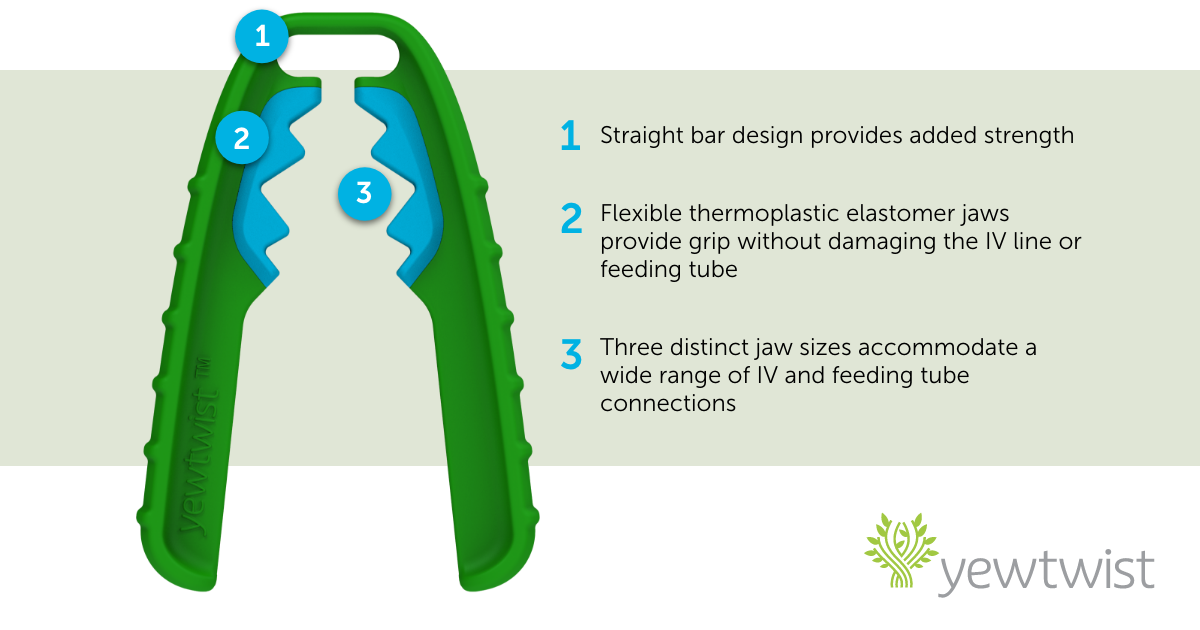Yewtwist
A Better Way to Manage IV Connections
About Us
Yewtwist was designed in Canada by Maria Plummer, a registered nurse with extensive experience in pediatric and adult oncology.
When IV lines are difficult to disconnect, nurses and at-home patients typically resort to any tool on-hand that can provide more grip: forceps, pliers, rubber gloves or tourniquets. These makeshift tools are ineffective and can cause damage to the IV line. Now there’s a solution for this common problem: Yewtwist is specially designed to help disconnect IV lines easily and safely.
The Yewtwist story
During more than 30 years in nursing, Maria Plummer has cared for thousands of patients with IV lines. Many of those IV lines were difficult to disconnect, resulting in wasted time. After witnessing the same challenges and frustration among her colleagues, Maria was compelled to address this problem. With no suitable solution available, she decided to create one herself.
The idea for Yewtwist was born during Maria’s time working as an oncology nurse. Enlisting the help of an engineering firm she developed numerous iterations and prototypes, and during the design phase, gathered regular feedback from oncology, ICU and dialysis nurses.
In 2022, Maria previewed her new invention at the American Association for Vascular Access’s annual scientific meeting in Minneapolis. Vascular access specialists from the US, Canada, Australia and England tried Yewtwist, and 100% of these clinicians said they prefer it over their current method, rating it 90-100% effective in disconnecting IV connections.
Maria is the 2023 winner of Innovation Guelph’s Rhyze Ventures Pitch competition for Scalable Business and was voted for the People’s Choice Award.



